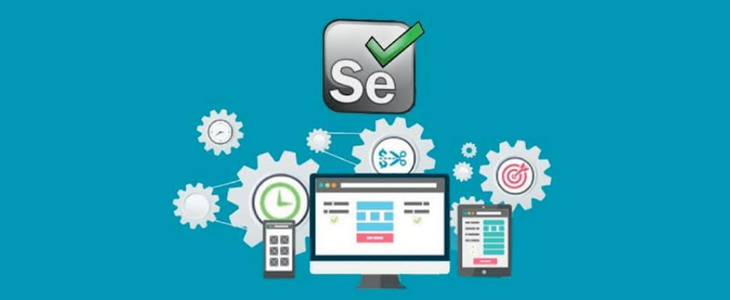Objective
The objective of learning Manual Testing and Software Testing is to gain proficiency in automated testing of web applications. Selenium is a widely used open-source test automation tool that enables testers to automate web applications across different browsers and platforms. The main objective of Selenium is to simplify web application testing by automating the repetitive manual testing tasks. By learning Manual Testing and Software Testing, individuals can gain skills in creating automated test scripts, testing web applications for functionality, compatibility, and performance, and identifying and resolving defects in web applications.
Who Can Learn :
Anyone with basic knowledge of programming languages such as Java, Python, C#, or Ruby can learn Manual Testing and Software Testing. Aspiring software testers, developers, or automation engineers who want to specialize in web application testing can also learn Selenium. Additionally, those who are familiar with manual web testing and want to automate the process can also benefit from learning Selenium.
Job Opportunities :
» Test Automation Engineer
» Selenium Automation Engineer
» Quality Assurance (QA) Engineer
» Software Test Engineer
» Test Analyst
» Test Lead
Frequently Asked Questions :
1. What is Selenium?
Selenium is an open-source automated testing tool that is primarily used for automating web applications. It provides a suite of tools that enable testers to automate web browsers and carry out end-to-end testing of web applications.
2. What is Manual Testing and Software Testing?
Manual Testing and Software Testing involves using the Selenium suite of tools to automate the testing of web applications. It allows testers to write test scripts that simulate user interactions with the web application and verify that the application behaves as expected.
3. What are the prerequisites for learning Manual Testing and Software Testing?
To learn Manual Testing and Software Testing, you should have a good understanding of programming concepts and should be comfortable with at least one programming language such as Java or Python. You should also have a basic understanding of HTML and CSS, as well as familiarity with web browsers and their developer tools.
4. What are the job opportunities for Manual Testing and Software Testing?
There are many job opportunities for professionals with skills in Manual Testing and Software Testing. Companies of all sizes require testers to ensure that their web applications are functional, secure, and easy to use. Job roles in this field include Test Engineer, Automation Engineer, QA Analyst, and Test Manager, among others.
5. What are some best practices for Manual Testing and Software Testing?
Some best practices for Manual Testing and Software Testing include writing modular and maintainable test scripts, using a Page Object Model to represent the web application in code, and using assertions to verify that the web application is behaving as expected. It is also important to write tests that are repeatable, reliable, and can be executed in a continuous integration and deployment pipeline.
Course Curriculum :
Web Driver
» What is Web Driver
» Simple Program in Selenium WebDriver
» Types Of Browser Launch, Downloading selenium driver file
» Firefox Browser Launching
» Chrome Browser Launching
» Safari Browser Launching
» Internet Explorer Browser Launching
Locators
» Inspecting elements in different browsers
» Id & xpath
» Name & tag Name
» Classname & link Text
» Partially Link Text & css Selector
» Check Box, Identifying common locator for all check boxes
» Text Box, Getting the user entered text from text box
» Checking the properties of Radio Button
Web Element
» How to locate the Web Elements on the web page
» Dynamic Locators
» Desired Capability
Navigation Commands
» Navigate To Command
» Forward Command
» Back Command
» Refresh Command
Actions
» Drag and Drop
» Mouseover Action
» Right Click & Double Click
» Performing Multiple Actions
Alerts
» Handling the Alert
» Passing the inputs to Alerts
» Get the text present in Alert & Exceptions
Popups
» Handling the Window based popups
» Handling the Notification popups
» Handling pop-ups using Robot class
Robot Class
» Methods to implement Robot class
» Mouse click using Robot class
» Limitations
» Copy Operations
» Cut Operations
» Paste Operations
» File Uploading & Downloading
Waits
» Static waits & Dynamic waits
» Implicit Waits & Explicit Waits
ScrollUp / ScrollDown
» Scroll the web page by the visibility of the element
» Scroll down the web page at the bottom of the page
» Horizontal scroll on the web page
» Multiple Scroll
» Scroll the web page by pixel
Frames
» Identifying a Frame
» Switching to Frames using Selenium Web Driver
Web Table
» Analyzing WebTable structure in DOM
» Dynamically changing WebTable handling
» Extracting values from webTable
» Handling multiple webtables in a page
» ScreenShot
Image
» Finding broken image URL
» Finding broken images count in webpage
Tooltip
» Advanced User Interactions API
» Get Tooltip Text in Selenium Web driver
» Tooltip using the "title" attribute
Robot framework
» Robot Framework Architecture, Installation, Standard Libraries, Built-in Tools
» Library Keywords & Variables
» Testing Login Page Using Robot Framework
Real-Time project in Selenium

